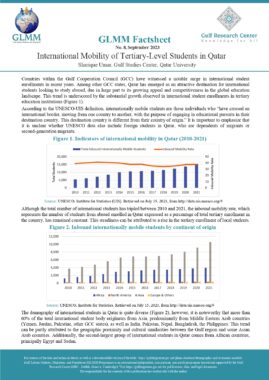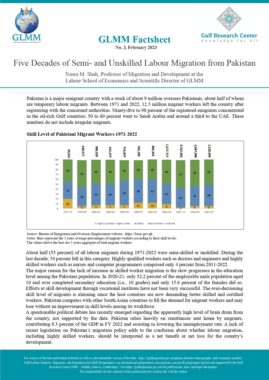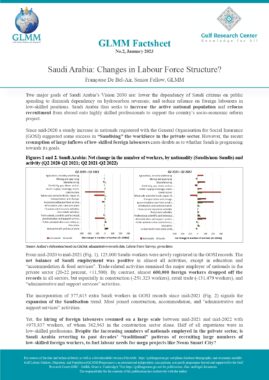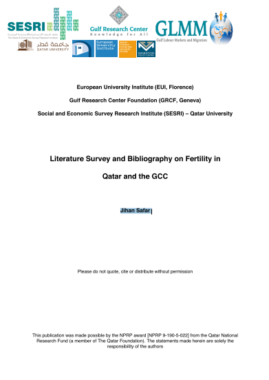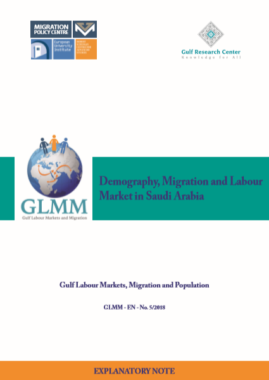UAE, Dubai: Percentage distribution of employed population (aged 15 and above) by nationality (Emirati/ non-Emirati), sex and occupation category (2017)
| Occupation category | |||||||||||
| Managers | Professionals | Technicians and associate professionals | Clerical support workers | Service and sales workers | Skilled agricultural, forestry and fishery workers | Craft and related trades workers | Plant and machine operators, and assemblers | Elementary occupations | Total | ||
| Males | 15.2 | 17 | 28.7 | 12.2 | 24.7 | 0.2 | 0.2 | 1.8 | 0 | 100 | |
| Emiratis | Females | 12.9 | 33.3 | 20.3 | 27.4 | 6 | 0 | 0.1 | 0 | 0 | 100 |
| Total | 14.3 | 23 | 25.7 | 17.8 | 17.8 | 0.1 | 0.1 | 1.2 | 0 | 100 | |
| Males | 8.9 | 10.3 | 10 | 4 | 15 | 0.1 | 29 | 10.9 | 11.8 | 100 | |
| Non-Emiratis | Females | 9.6 | 25.9 | 14.2 | 11.3 | 13.3 | 0 | 0.4 | 0.2 | 25.1 | 100 |
| Total | 9 | 12.9 | 10.7 | 5.2 | 14.8 | 0.1 | 24.1 | 9.1 | 14.1 | 100 | |
| Males | 9.1 | 10.5 | 10.5 | 4.2 | 15.4 | 0.1 | 28.1 | 10.7 | 11.4 | 100 | |
| Total | Females | 9.8 | 26.5 | 14.7 | 12.6 | 12.7 | 0 | 0.4 | 0.2 | 23.1 | 100 |
| Total | 9.3 | 13.3 | 11.3 | 5.7 | 14.9 | 0.1 | 23.1 | 8.8 | 13.5 | 100 | |
Source : Dubai Statistics Center – Labour Force Survey 2017
ANNEXED NOTE
1. Characteristics of data, definitions
DSC has been conducting Labour Force Surveys on Dubai Emirate in 2008, 2009, 2011 and yearly since 2012.
Sample of LFS 2017: 3,000 households (1,500 Emirati households and 1,500 non-Emirati households) and 1,000 workers from labour gatherings.
Date of reference: ? 2017.
The time reference of the survey is:
Visit day is the time reference for the family personal data.
The week ended on the visit day is the time reference for the employment status (employed / unemployed).
Month ended on the visit day is the time reference for job search.
The two years ended on the visit day represent the time reference for training of people who are unemployed and seeking a job.
Classification of occupations: International Standard Classification of Occupations (ISCO 08).
2. Institution which provides data
Dubai Statistics Centre (DSC).
3. Data availability
Some tabulations of the results of Dubai Labour Force Surveys are available (in English and in Arabic, PDF and Word formats) at:
https://www.dsc.gov.ae/en-us/Themes/Pages/Labour.aspx?Theme=41&year=2017#DSC_Tab1
A summary volume of tables and analysis from 2017 and earlier Labour Force Surveys appear in publications (PDF format, in Arabic only):
https://www.dsc.gov.ae/en-us/Themes/Pages/Labour.aspx?Theme=41&year=2017#DSC_Tab2
Some tables (in PDF format), definition of concepts and partial methodological indications are available in the LFS’ project page on DSC’s website:
https://www.dsc.gov.ae/en-us/Programs-Statistical-Surveys/Pages/Statistical-Project-details.aspx?ProjectId=21
Last date of access: June 2018
Similar Posts:
- UAE, Dubai: Percentage distribution of employed population (aged 15 and above) by nationality (Emirati/ non-Emirati), sex and age group (2017)
- UAE, Dubai: Percentage distribution of employed population (aged 15 and above) by nationality (Emirati/ non-Emirati), sex and employment status (2017)
- UAE, Dubai: Percentage distribution of employed population (15 years and above) by nationality (Emiratis/ non-Emirati), sex and average usual working hours per week (2017)
- UAE, Dubai: Percentage distribution of employed population (15 years and above) by nationality (Emiratis/ non-Emirati), sex and monthly wage group (2017)
- UAE, Dubai: Percentage distribution of population (aged 15 years and above) by nationality (Emirati/ non-Emirati), sex and economic activity status (2017)
Tags: Employment, Female Employment, Foreign & National Populations, Foreign Population, National & Foreign Labour, National Population, United Arab Emirates

































